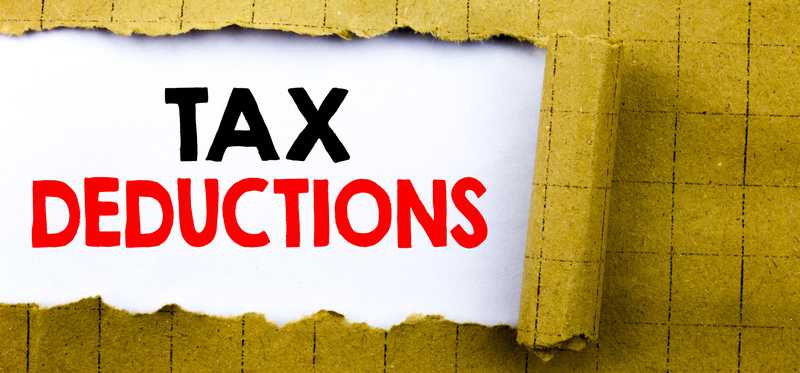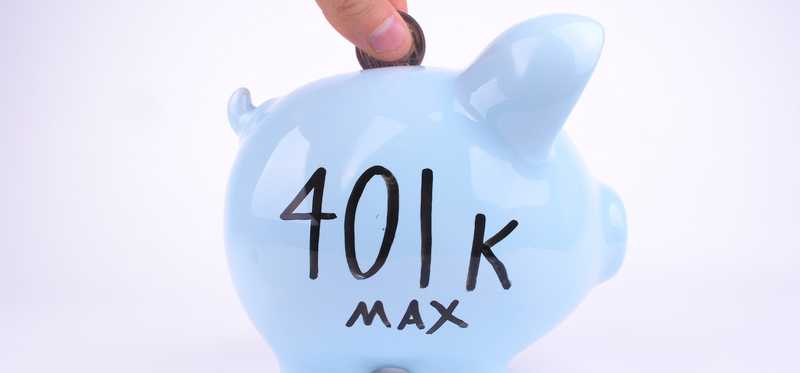15 Tips to Help You Start Saving for Retirement

15 Tips to Help You Start Saving for Retirement
Saving for retirement is hard work with a big payoff
It's really hard to save for retirement since you'll need to sacrifice over your career to end up with a large enough nest egg to support yourself. But, if you make an effort, you can enjoy financial security in your later years and have the freedom and flexibility to do things you've always dreamed of.
If you're not sure how to get started saving for retirement, these 15 tips can help make the process easier than you imagined.
5 Winning Stocks Under $49
We hear it over and over from investors, “I wish I had bought Amazon or Netflix when they were first recommended by the Motley Fool. I’d be sitting on a gold mine!” And it’s true. And while Amazon and Netflix have had a good run, we think these 5 other stocks are screaming buys. And you can buy them now for less than $49 a share! Simply click here to learn how to get your copy of “5 Growth Stocks Under $49” for FREE for a limited time only.
Previous
Next

1. Track your spending for 30 days
If you aren't currently investing for retirement, chances are good it's because you feel like you don't have a lot of cash to spare. That means you need to identify where your money is currently going.
Tracking your spending for 30 days gives you a clear picture of your current financial status so you can make the changes necessary to prioritize saving for the future.
Previous
Next

2. Make a detailed budget
Budgeting allows you to allocate your dollars more wisely so you can use some of your money to invest for the future.
You can make a budget that divides up your money into different categories, including necessities, retirement savings, and discretionary spending. You can be as detailed as you feel comfortable with, or as you need to be, to make sure you don't spend too much on certain purchases and leave yourself with nothing to save.
Previous
Next

3. Look for big expenses to cut
The more you can reduce your expenses, the more cash you can free up for retirement savings.
Making many small cuts sometimes works, but it's hard to sustain. If you can make a few big changes to dramatically cut spending, you can redirect all that money to retirement savings. And you'll only have to make the change once.
This could mean doing things like driving a cheaper car or giving up monthly memberships you aren't using.
Previous
Next

4. Challenge yourself to some no-spend days
Many people spend by habit, but you can break that habit by seeing how many days you can spend nothing at all during the course of the month.
No-spend days encourage you to change your mindset and look for alternatives to shopping to fulfill your needs or entertain yourself. As a bonus, all the money you avoid spending on those days can be used to shore up your retirement accounts.
Previous
Next

5. Treat retirement savings as a must-pay bill
If you treat retirement savings as optional, chances are good that you won't end up investing enough.
You owe it to yourself to consider saving for retirement as crucial as paying your rent or mortgage since you'll need to rely on your nest egg in the future.
By treating retirement savings as an essential bill, you can work it into your budget first and plan all your other spending around it.
5 Winning Stocks Under $49
We hear it over and over from investors, “I wish I had bought Amazon or Netflix when they were first recommended by the Motley Fool. I’d be sitting on a gold mine!” And it’s true. And while Amazon and Netflix have had a good run, we think these 5 other stocks are screaming buys. And you can buy them now for less than $49 a share! Simply click here to learn how to get your copy of “5 Growth Stocks Under $49” for FREE for a limited time only.
Previous
Next

6. Decide what kind of retirement account to invest in
When you're investing for retirement, there are accounts that provide tax perks. You'll have to decide on which one(s) you want to use. For most people, options include:
- 401(k)s, which are offered by employers and are easy to invest in, but which may provide limited investment options. Many come with an employer match, and contributions are made with pre-tax dollars.
- IRAs, which you can open on your own and contribute to with pre-tax dollars. They have a lower contribution limit than 401(k)s and income restrictions on deductible contributions, but provide more investment choices.
- Roth IRAs, which aren't contributed to with pre-tax dollars, but which allow you to make withdrawals tax free as a retiree. They could be better for people who think their tax rate will rise.
Be sure to look into each option carefully to pick the retirement plan that's right for you.
Previous
Next

7. Maximize the tax credits and deductions you're entitled to
You should know the contribution rules and annual contribution limits for 401(k) and IRA accounts. Making deductible contributions helps you save on your tax bill so each contribution ends up reducing your take-home income by a smaller amount.
Lower- and middle-income earners also should take advantage of the Saver's Credit, which provides a tax credit worth up to 50% of retirement account contributions.
You can claim this credit on up to $2,000 in contributions if you're single and $4,000 in contributions if you're married filing jointly, so could save between $1,000 and $2,000 on your taxes if you're eligible for the maximum credit.
ALSO READ: Fewer Than Half of All Americans Are Aware of This Free Money for Investing
Previous
Next

8. Learn the rules for employer matching contributions
If your employer offers a 401(k) and matches contributions to it, find out how to max out the matching funds.
Matching contributions are free money, and many employers match between 50% and 100% of what you contribute up to a certain percentage of your salary.
You don't want to pass up any of this money your employer is willing to give you for your future, so ask what the rules are.
Previous
Next

9. Set a target retirement date
It's important to know when you want to retire, as you have to make certain your nest egg will be large enough to support you by that date.
If you're going to start Social Security when you retire, the age when you leave the workforce will also affect the size of your benefits.
Think about your goals for your later years and how much you can invest in preparing for your future when you set your target retirement date.
Previous
Next

10. Estimate your retirement savings goals
You also need to know what size your future nest egg needs to be in order to support you.
Although there are different ways to figure out this target amount, it's simple and easy to estimate it by multiplying your expected final salary by 10.
Your expected final salary is what you'll be earning when you quit working. You can figure it out by assuming you'll get around a 2% average raise each year until you retire. Then multiply that number by 10.
5 Winning Stocks Under $49
We hear it over and over from investors, “I wish I had bought Amazon or Netflix when they were first recommended by the Motley Fool. I’d be sitting on a gold mine!” And it’s true. And while Amazon and Netflix have had a good run, we think these 5 other stocks are screaming buys. And you can buy them now for less than $49 a share! Simply click here to learn how to get your copy of “5 Growth Stocks Under $49” for FREE for a limited time only.
Previous
Next

11. Figure out how much to invest each month
With knowledge of your retirement date and desired nest egg size, you can calculate exactly how much money you have to invest each month. Investor.gov has calculators that can help you do this math.
Use the calculator to figure out what amount to invest now so you can have enough in your retirement accounts when you're ready to leave your job for good.
Previous
Next

12. Automate contributions to your retirement investments
If you know how much to invest and build your budget around it, you should have enough money available each month to hit your savings targets.
But, you don't want to force yourself to ensure you make the responsible choice and move this money manually into your retirement accounts every month. There's too great a chance that won't happen.
Take the choice away from yourself by making contributions to your 401(k) or IRA automatic. You can sign up with your employer or brokerage firm to do that.
ALSO READ: 4 Low-Effort Ways to Double Your Retirement Savings
Previous
Next

13. Save your raises
One of the easiest ways to start, or increase, your retirement investing is to use your salary increases to do it.
When your income goes up, your spending is still based on your previous earnings. Before getting used to spending the extra, set it up so the entire amount is automatically contributed to retirement accounts.
You'll be able to rapidly increase the amount you save without changes to your current lifestyle.
Previous
Next

14. Invest windfalls
If you come into money unexpectedly from a tax return, workplace bonus, cash gift, or other source, use the money to invest for retirement. It can help you to start your account or to grow your balance if you put surprise extra money into your retirement plan.
ALSO READ: Wait, Before You Retire: Can You Answer These 5 Questions?
Previous
Next

15. Invest credit card cash back
If you get cash back with a credit card, consider using the money you get to invest for retirement. Some cards actually allow you to set this process up automatically by having your cash back deposited into a brokerage firm.
This is an effortless way to save for retirement with each purchase you make, and the money can really add up if you use your card often.
5 Winning Stocks Under $49
We hear it over and over from investors, “I wish I had bought Amazon or Netflix when they were first recommended by the Motley Fool. I’d be sitting on a gold mine!” And it’s true. And while Amazon and Netflix have had a good run, we think these 5 other stocks are screaming buys. And you can buy them now for less than $49 a share! Simply click here to learn how to get your copy of “5 Growth Stocks Under $49” for FREE for a limited time only.
Previous
Next

Now is the time to start saving
The sooner you start working on saving for retirement, the faster you can get your money invested so it starts growing -- and the easier it will be to save enough to support yourself.
Starting following these 15 tips today so you can be as prepared as possible for life once paychecks come to an end.
The Motley Fool has a disclosure policy.
Previous
Next
Invest Smarter with The Motley Fool
Join Over Half a Million Premium Members Receiving…
- New Stock Picks Each Month
- Detailed Analysis of Companies
- Model Portfolios
- Live Streaming During Market Hours
- And Much More
READ MORE
HOW THE MOTLEY FOOL CAN HELP YOU
-
Premium Investing Guidance
Market beating stocks from our award-winning service
-
The Daily Upside Newsletter
Investment news and high-quality insights delivered straight to your inbox
-
Get Started Investing
You can do it. Successful investing in just a few steps
-
Win at Retirement
Secrets and strategies for the post-work life you want.
-
Find a Broker
Find the right brokerage account for you.
-
Listen to our Podcasts
Hear our experts take on stocks, the market, and how to invest.
Premium Investing Services
Invest better with The Motley Fool. Get stock recommendations, portfolio guidance, and more from The Motley Fool's premium services.